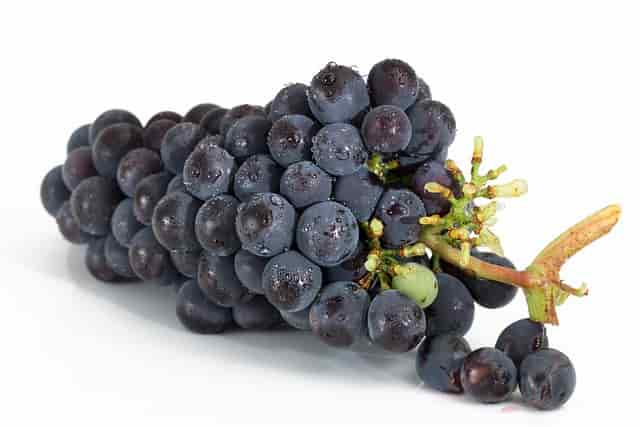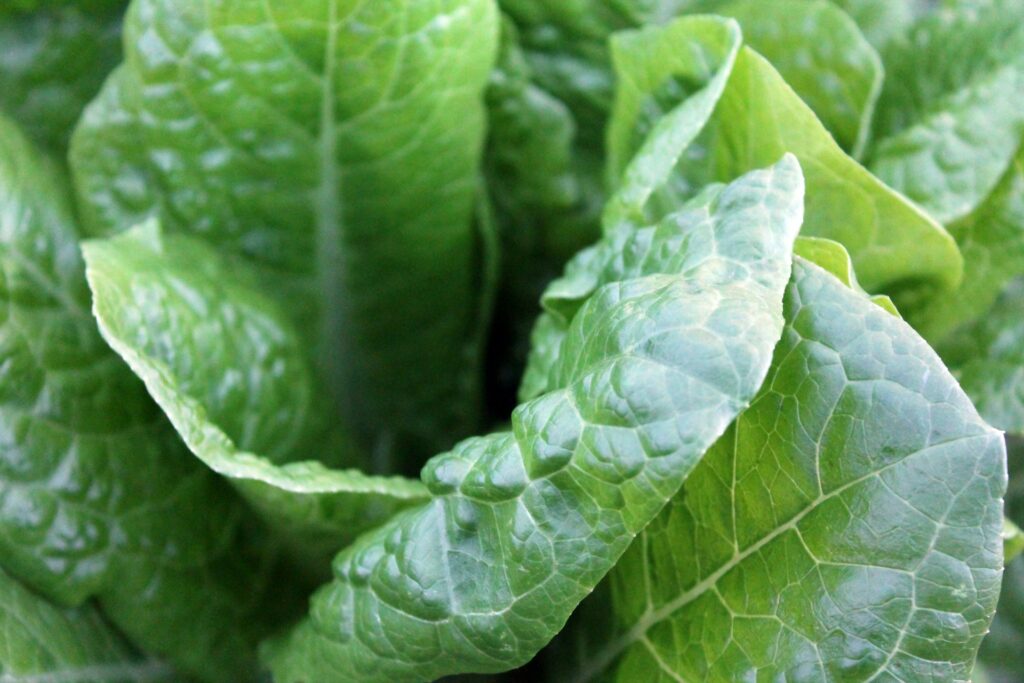In recent years, the discussion over organic food vs. conventional food has gained more and more attention. Consumers are increasingly considering their health and the environment, frequently questioning which option is best for both the environment and their own health.
When it comes to selecting foods for a healthy lifestyle, the debate over organic versus conventional food is inevitable. Is buying organic food worth the extra money? What real distinctions exist between the two?
This article compares and contrasts conventional and organic food, emphasizing the notable differences between the two.
What is organic food?
Organic food refers to food products that are produced, processed, and handled in ways that adhere to specific standards set by organic certification bodies. These standards are designed to promote sustainable agriculture, enhance soil and water quality, reduce pollution, and provide more natural and nutritious food options.

Grapes
Major characteristics of organic foods include: no synthetic fertilizers or pesticides; no genetically modified organisms (GMOs); consideration of animal welfare; and use of sustainable practices such as measures to conserve water, maintain soil health, and enhance biodiversity.
For food products to be labeled as organic, they must meet the standards set by an organic certification body. In the U.S., for instance, the USDA National Organic Program (NOP) sets these standards. To obtain certification, processors and farmers must undergo a rigorous certification process, which includes regular inspections and audits.
What is conventional food?
Conventional food refers to food products that are produced using modern industrial farming practices. These practices often involve the use of synthetic chemicals, genetic modification, and intensive farming techniques aimed at maximizing yield and efficiency.
Major characteristics of conventional foods include the use of synthetic fertilizers and pesticides to protect crops from pests and diseases and to promote growth; the employment of GMOs to improve crop resistance to pests, diseases, and environmental conditions, as well as to enhance yield; and the use of synthetic food additives and other high-yield farming practices.
Again, conventional farming practices are designed to be economically efficient, often benefiting from economies of scale. This can lead to lower production costs and lower prices for individuals.
Nutritional content
Organic food
Studies have demonstrated that organic foods can have increased levels of certain nutrients compared to conventional foods.
- Antioxidants: Organic vegetables and fruits tend to have higher levels of antioxidants, which help combat oxidative stress in the body.
- Vitamins and Minerals: Some organic produce may have slightly higher concentrations of vitamins and minerals, such as vitamin C, iron, and magnesium.
Conventional Food
Whereas conventional foods can be nutrient-rich, the use of synthetic fertilizers may result in higher yields but potentially lower nutrient density per serving. Nevertheless, the differences in nutrient content between organic and conventional foods are often modest and can vary depending on the food type and growing conditions.
Although there may not be much of a nutritional difference between conventional and organic food, it’s crucial to remember that organic food is devoid of GMOs and synthetic pesticides, which many individuals may choose to avoid.
Pesticide Exposure
Organic food
One of the major reasons consumers opt for organic food is to limit their exposure to pesticides. Organic farming strictly limits the use of synthetic pesticides, herbicides, and fungicides. Rather, organic farmers rely on natural pest control methods, such as:
- Biological pest control: Using natural predators or parasites to control pest populations.
- Crop rotation: Changing the type of crop grown in a particular area to disrupt pest and disease cycles.
- Organic pesticides: Natural substances permitted in organic farming that are less harmful than their synthetic counterparts.
Conventional Food
Conventional farming commonly uses synthetic pesticides to protect crops from pests and diseases. These chemicals can leave residues on food, which may pose health risks to consumers. Although regulatory bodies set limits on pesticide residues, and washing produce can reduce exposure, some consumers prefer to avoid these chemicals altogether by choosing organic.

Use of pesticides in conventional farming
Although organic food may have fewer pesticide residues than conventional food, it’s important to remember that some brands that sell organic food products often fall below acceptable safety standards established by regulatory bodies.
Choosing organic food can help consumers reduce their consumption of synthetic pesticides if they have concerns about being exposed to pesticides.
Environmental Impact
Organic food
When contrasting conventional versus organic food, it is important to take the environmental impact of farming practices into account. Organic farming practices are designed to be more sustainable and environmentally friendly. Major benefits include:
- Soil Health: Organic farming improves soil fertility through the use of compost, manure, and crop rotations, reducing erosion and promoting biodiversity.
- Water Conservation: Organic farms typically use water more efficiently and avoid contaminating water sources with synthetic chemicals.
- Biodiversity: Organic farms often support higher levels of biodiversity, creating habitats for wildlife and beneficial insects. Organic farms help promote biodiversity by conserving habitats for natural flora and fauna.

Organic farming improves soil fertility
Conventional food
Conventional farming practices can have a significant environmental impact, including:
- Soil Degradation: The heavy use of synthetic fertilizers and pesticides can degrade soil health over time.
- Water Pollution: Runoff from conventional farms can carry chemicals into water bodies, harming aquatic life and potentially contaminating drinking water.
- Greenhouse Gas Emissions: Conventional farming tends to rely more on fossil fuels, contributing to greenhouse gas emissions.
Cost and accessibility
Organic food
One of the major concerns that consumers have while contemplating organic food is the relatively higher cost when compared to their conventional counterparts. Organic foods are usually more expensive as compared to their conventional counterparts due to:
- Higher Production Costs: Organic farming is typically more labor-intensive and has lower yields.
- Certification Costs: Obtaining and maintaining organic certification can be costly.
- Supply and Demand: The market for organic food is smaller, which can drive up prices.
The accessibility of organic foods compared to conventional foods varies widely based on several factors, including geographical location, socioeconomic status, availability, and consumer demand.
Organic foods are often less readily available than conventional foods. They are typically found in specialty stores, farmers’ markets, and specific sections of larger supermarkets.
Conventional food
Conventional foods are generally less expensive because:
- Higher Yields: Conventional farming methods often produce higher yields, reducing costs per unit.
- Economies of Scale: Large-scale conventional farms can operate more efficiently and lower production costs.
- Government Subsidies: In some regions, conventional farming receives more subsidies, further lowering costs.
Conventional foods are widely available in all types of food retail outlets, including supermarkets, convenience stores, and large retail chains.
Thanks to global supply chains, conventional foods are available year-round, regardless of local growing seasons.
Taste and quality
Organic food
Several consumers believe that organic foods taste better and are of higher quality. This belief is influenced by the fact that organic produce is often fresher, as it is typically sold locally and in season.
Conventional Food
Taste and quality can vary widely in conventional foods. Whereas some conventionally grown food can be just as fresh and flavorful as organic, other factors like long-distance shipping and extended shelf life can affect taste and texture.
It is important to note that tastes might vary from individual to individual, and some people might not taste much of a difference between conventional and organic food.
In the end, food quality and flavor can be subjective, and determining what kind of cuisine is favored often comes down to personal tastes.
Health Impacts
Organic food
- Lower Pesticide Residues: Reduced exposure to harmful chemicals is a key health benefit of organic food.
- Antibiotic Resistance: Organic meat and dairy products do not use antibiotics for growth promotion, reducing the risk of antibiotic-resistant bacteria.
Conventional Food
- Safety Regulations: Conventional foods are subject to strict safety regulations to ensure they are safe for consumption.
- Nutritional Adequacy: Conventional foods can provide all the necessary nutrients for a healthy diet when chosen wisely.
Consumer attitudes towards organic and conventional food
Consumers may have different attitudes about conventional and organic food depending on their personal objectives, values, and beliefs.
Some people prefer organic food to promote sustainable farming practices and stay away from synthetic inputs, placing a higher priority on health and environmental issues. Others might choose conventional cuisine because it’s more convenient and affordable.
Attitudes toward conventional and organic food are significantly shaped by consumer education, awareness, and individual experiences.
It’s important to note that consumer views are changing as more individuals become aware of how their dietary decisions affect the environment and their own health.
Conclusion
Choosing between organic and conventional food depends on various factors, including personal health priorities, environmental concerns, and budget. Organic foods offer benefits such as reduced pesticide exposure and environmental sustainability, but they can be more expensive.
Conventional foods are more affordable and widely available, but they come with certain trade-offs in terms of pesticide residues and environmental impact.
Even though organic food might have certain benefits in terms of nutrition and environmental sustainability, it might come at a relatively higher price and limited accessibility. On the contrary, conventional food might be more broadly accessible and less expensive, but it might also be less environmentally conscious and contain pesticide residues.
In the end, the choice between conventional and organic food depends on one’s circumstances and preferences. Regardless of the option, prioritizing a balanced diet, encouraging sustainable farming methods, and making well-informed choices are crucial for leading a healthy and conscientious lifestyle.
Share Your Thoughts: We’d love to hear your thoughts on this topic. Share your comments below and join the conversation!



Pingback: Top 10 Organic Dairy Products You Should Try: Embracing the...
Pingback: The Organic Revolution: How Tajín Seasoning Enhances Flavor Naturally - Organic Solace
Pingback: Why Organic Food Packaging Matters: Ensuring Freshness and Sustainability - Organic Solace
Pingback: 5 Main Benefits of Organic Foods
Pingback: 4 IMPORTANT PLACES TO FIND ORGANIC FOODS